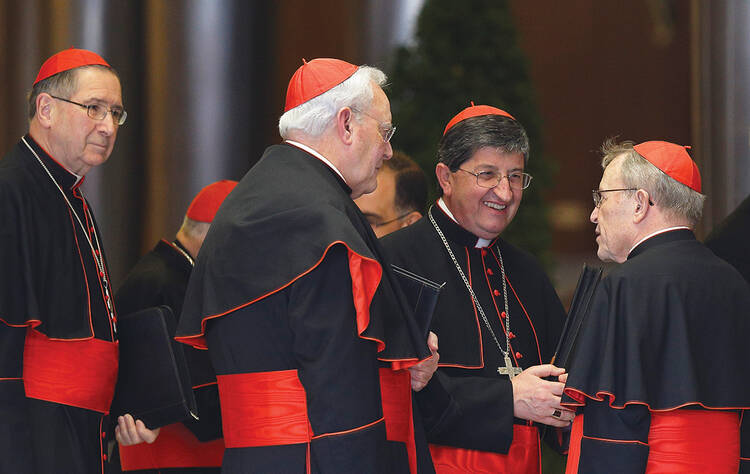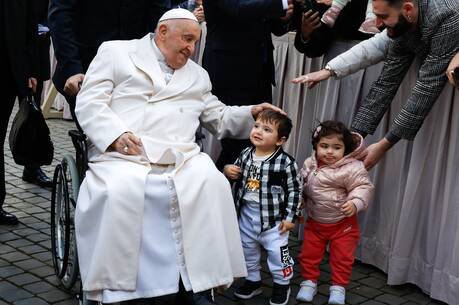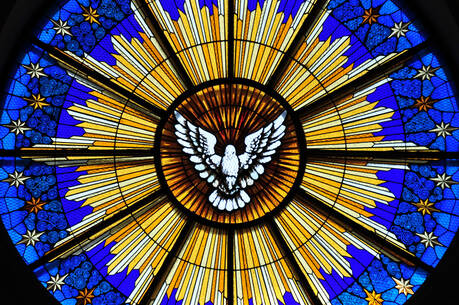Unlike the other synods held since the Second Vatican Council, the Extraordinary Assembly of the Synod of Bishops to discuss the family, held in Rome last October, sparked widespread interest. It did so for two reasons. First, the open and lively debate in the synod contrasted starkly with the muted interventions characteristic of its predecessors, which tended to be little more than rubber stamps. The lively debate was not an accident. Pope Francis, in his opening greeting to the synod, had stipulated that “speaking honestly” was the prerequisite for the synod’s success. Second, it was in this tell-us-what-you-think atmosphere that the synod addressed sensitive, controversial and real-life issues like divorce, annulments, same-sex unions and cohabitation before marriage. The world took notice.
But there is a third reason the synod should have aroused interest, and it is perhaps the most important reason of all. It is “synodality.” The pope used the word three times in his greeting. The word’s very strangeness (a neologism, at least in English) and the pope’s repeated use of it in such a short speech should alert us that something significant might be at stake. What could that possibly be?
Let us speculate. But to do so we need some background. First of all, a definition: What is a synod? If we look at the history of the church from its very earliest days until 1965, the answer is simple. A synod is a church council. In church-speak the two words are synonymous and are used interchangeably. The Council of Trent, for instance, referred to itself as “this holy synod”—haec sancta synodus. The 53 volumes of official background material on the Second Vatican Council are called “the proceedings of the synod”–acta synodalia.
But the definition raises a further question: What, then, is a council? A council is a meeting, principally (but not exclusively) of bishops, gathered in Christ’s name, to make decisions binding on the church. That definition covers both the 21 councils/synods Catholics count as ecumenical, that is churchwide, and the hundreds upon hundreds of local councils/synods that have taken place since the very earliest days of the church.
Hundreds upon hundreds! If we take those numbers seriously, we soon come to the conclusion that the traditional organ of church governance until the late 19th century was not the papacy but the synod. Of course, as St. Thomas Aquinas said so well, in important matters of controversy, the papacy is the arbiter, finaliter determinare, but up to that point decisions rested on the local or regional level.
Good Council
Probably taking their cue from the so-called Council of Jerusalem (Acts 15:1-30), at least 50 councils/synods were held in Palestine, North Africa, Rome, Gaul and elsewhere as early as the second century. After the recognition of Christianity by Constantine, the numbers continued to grow across the Christian world. In Spain alone from the fourth until the early eighth century there were at least 50.
The decisions of these synods might be doctrinal or disciplinary, but of course they were binding only on the local level. Nonetheless, they were sometimes taken as normative for the church at large, as were those of the synods against Pelagianism held in North Africa and elsewhere in the fifth and sixth centuries.
In the 16th century, the Council of Trent ordered bishops to hold synods annually and archbishops to hold provincial synods every three years. The synods were to be the instruments for interpreting and implementing Trent on the local level. John Carroll, accordingly, had hardly been appointed bishop of Baltimore before he held his first diocesan synod in 1791—with his 22 priests. Over the next three-quarters of a century, there followed in Baltimore 21 diocesan, provincial and plenary synods as the church spread across the country. The Third Plenary Council (1884) produced the landmark Baltimore Catechism, from which for almost 100 years every Catholic girl and boy in the country learned the basics of the faith.
As was happening elsewhere at about the same time, the series of synods in Baltimore ended in 1886. The definitions in 1870 of papal primacy and infallibility by the First Vatican Council wittingly or unwittingly put a damper on the synodal phenomenon. Synods continued to be held here and there, now and again, but the persuasion grew that they were no longer necessary or appropriate because “Rome” could and would make all decisions that were needed.
By the time of Vatican II, many bishops, partly in reaction to such centralization, promoted the doctrine of episcopal collegiality, that is, the teaching that bishops have a responsibility not only for their own dioceses but a responsibility, with and under the pope, for the whole church. An aggressive minority at the council fought the doctrine as untraditional, dangerous and contrary to Vatican I, and it tried to weaken it even after it was approved by an overwhelming majority.
But once approved, the question arose as to how the teaching was to be made operative in the church. What would be its institutional form? As the council entered its final stages, it began to wrestle with that problem. But before it was able properly to address it, Pope Paul VI intervened in September 1965 by creating the Synod of Bishops. Faced with the papal intervention, the council incorporated the Synod of Bishops into its document “On the Pastoral Office of Bishops,” as if it were an expression of collegiality.
But of course it was not. As defined by Paul VI, the Synod of Bishops was strictly an advisory body, with no authority beyond what the pope conceded to it. As Paul’s document repeatedly stated, the synod was subject “immediately and directly to the authority” of the pope. Probably without realizing it, Paul VI radically redefined what the word synod had meant since the church’s earliest days. A synod was no longer a decision-making body. It was now an instrument not of the bishops but of the Holy See, to use or not use at it saw fit.
What to Expect
The synods since Vatican II have functioned precisely according to the model Pope Paul VI set down, with even their advisory function often seemingly inoperative. But the extraordinary meeting of the synod last year did not in the least follow that pattern, nor are there grounds for thinking that the follow-up this October will be any different. What is going on? We need to lift our eyes above the specific problems the synod addressed and focus them instead on the way Pope Francis dealt with the synod. We need to pay attention to his insistent use of the curious word synodality.
We cannot read the pope’s mind, but we can examine his record. While still archbishop of Buenos Aires, for instance, Francis was the key player in the revival of the Conference of Bishops of Latin America, known as CELAM, an institution that had languished for several decades. In some countries before Vatican II, episcopal conferences had begun to play a role somewhat analogous to that of synods, and CELAM then and immediately after the council was an important instance of the phenomenon. Vatican II encouraged such conferences, but by the early 1980s the Holy See had begun ever more to limit their authority. The revival of CELAM in 2007 was a reaction against that development.
When Francis, on the night of his election, styled himself “bishop of Rome,” he signaled the importance and dignity of the local church. In his greeting to the synod last October, he said the meeting was an expression of “collegiality and synodality.” He told those assembled that they “bring the voice of the particular churches, assembled at the level of local churches through bishops’ conferences.” These innocent-sounding expressions seem to point in one direction: a revival in some form of the ancient synodal tradition of the church.
No revival in history has been able to bring back the past “as it really was.” If we are headed for a revival of the synodal tradition, it will be conditioned by our present realities, especially the communication networks of today, which instantaneously make local decisions global news. Nonetheless, Pope Francis seems to want somehow to move the church in that direction. If so, take note. It’s important.







